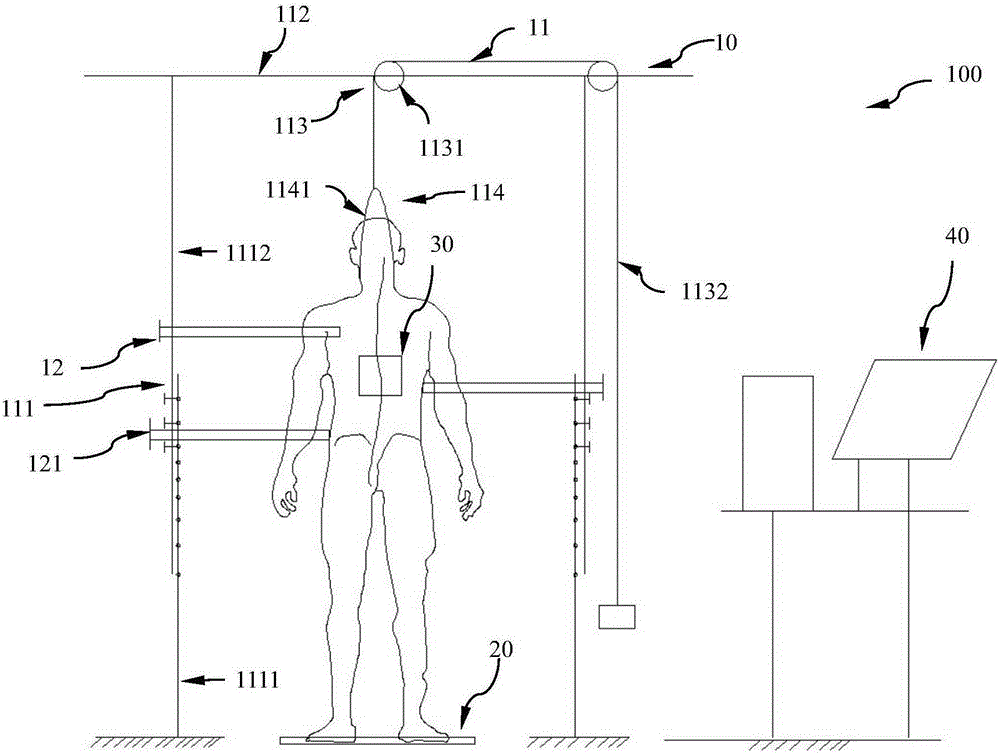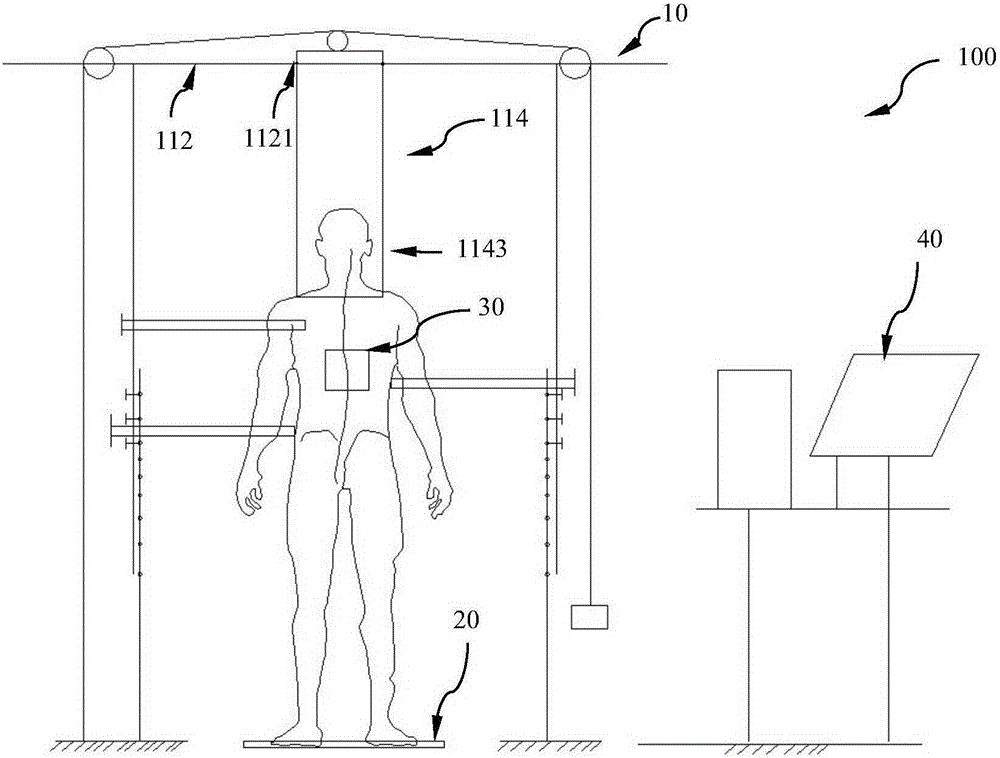Biomechanics measuring device for spinal column in vivo
A biomechanical and measuring device technology, applied in the field of medical devices, can solve the problems of unable to use spine biomechanical research, unable to test and study in vivo spine biomechanics, unable to accurately obtain the magnitude of loading stress, etc.
- Summary
- Abstract
- Description
- Claims
- Application Information
AI Technical Summary
Problems solved by technology
Method used
Image
Examples
Embodiment 1
[0028] figure 1 Schematic diagram of the structure of the in vivo biomechanical measurement device for the spine of Example 1 when the spinal submandibular traction is stretched
[0029] figure 2 Schematic diagram of the structure when the in vivo biomechanical measuring device for the spine of Example 1 is used for traction and stretching of the spine underarm
[0030] image 3 Schematic diagram of the structure when the rigid loading frame is pressed down for the spine in vivo biomechanical measurement device of embodiment 1
[0031] right figure 2 , 3, 4 and figure 1 The same part is not explained.
[0032] Such as figure 1 , as shown in 2 and 3, the spinal column in vivo biomechanical measurement device 100 includes a stress loading part 10, a force measuring part 20, located below the stress loading part 10, and a spine shape measuring part 30, which is movably arranged on the subject's spine Afterwards, the data processing unit 40 is connected with the force mea...
Embodiment 2
[0052] Figure 4 Schematic diagram of the structure when the in vivo biomechanical measurement device for the spine of Example 2 is used for spinal submandibular traction and stretching
[0053] as such figure 1 , 2, 3 A simplification of the gate-shaped structure. The gate-shaped structure composed of a beam and two columns is changed into an Arabic numeral "7" composed of a beam and a column. The corresponding ropes should be arranged as shown in Figure 4 As shown, another pulley is arranged at the end of the crossbeam. As an adaptation, the end of the pusher 122 in the middle of the three pushers 121 that is close to the subject is correspondingly designed as a hook, so as to The subject's waist can be pushed forward and pulled horizontally, and the other pushing piece can also be designed as a hook like the one in the middle. Other operations are similar to Example 1.
[0054] Effects and beneficial effects of the embodiment
[0055] The in vivo biomechanical measureme...
PUM
 Login to view more
Login to view more Abstract
Description
Claims
Application Information
 Login to view more
Login to view more - R&D Engineer
- R&D Manager
- IP Professional
- Industry Leading Data Capabilities
- Powerful AI technology
- Patent DNA Extraction
Browse by: Latest US Patents, China's latest patents, Technical Efficacy Thesaurus, Application Domain, Technology Topic.
© 2024 PatSnap. All rights reserved.Legal|Privacy policy|Modern Slavery Act Transparency Statement|Sitemap



